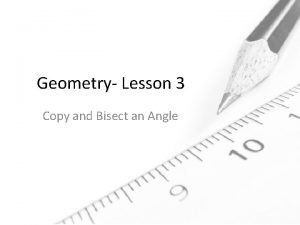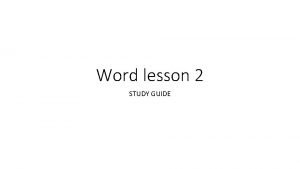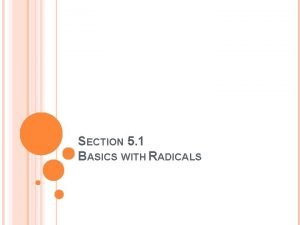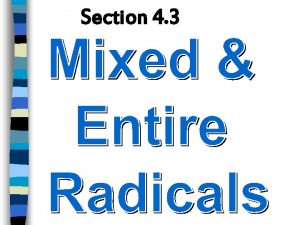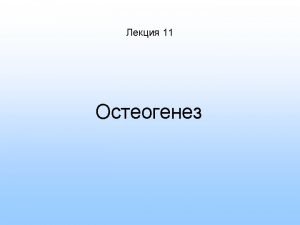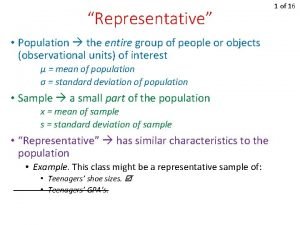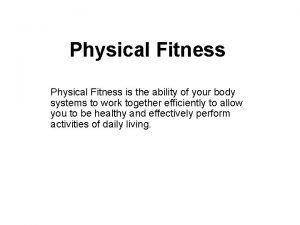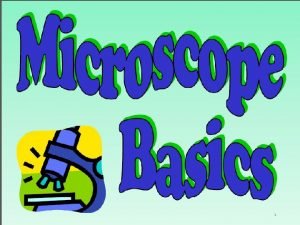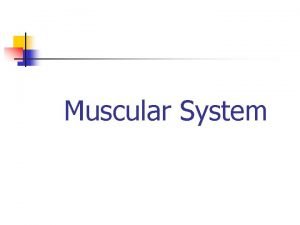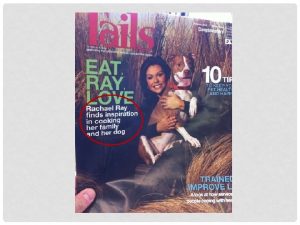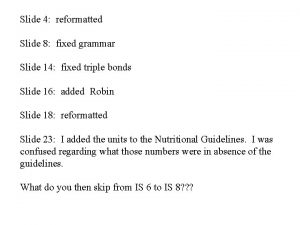Chapter 7 Lesson 1 COPY ENTIRE SLIDE A
















- Slides: 16

Chapter 7

Lesson 1

(COPY ENTIRE SLIDE) �A trait is a distinguishing characteristic of an organism. � During reproduction, traits are passed down from one generation to the next, this is known as inheritance. � For every organism there is a range of inherited traits. � Hair color � Eye color � Petal color � Attached ear lobes Can you name more?

(COPY ENTIRE SLIDE) � Not all traits are inherited. � An acquired trait is a trait that an organism acquires or develops during his lifetime. �Loosing a limb (arm/leg) �Learning a trick/sport �Neat handwriting �Growing long hair Can you name more?

� Organisms pass traits to their offspring in one of the two ways: � Asexual reproduction – it produces offspring who are identical to the original; passing of traits by cell division an mitosis �Example: amoebas, bacteria, and some plants � Sexual reproduction – produces offspring that are similar but not identical to the parent or parents; requires DNA from both reproductive cells �Example: humans, most species

DNA appears as a twisted zipper in the nucleus; when stretched out can be almost 2 meters long! It can fit into a cells nucleus since it is tightly coiled with proteins to form chromosomes. � DNA – (Deoxyribonucleic Acid) contains genes � Genes – a section of DNA that has genetic information for one trait � Genes carry instructions for traits.

� Chromosomes are found in the nucleus and carry long pieces of DNA. � The number of chromosomes differs depending on the species and in most species they come in pairs. � Humans have 23 pairs of chromosomes in each body cell. � Each pair contains one chromosome from the father and one from the mother. � Reproductive cells are known as the sperm and egg; each contains 23 single chromosomes. Within each chromosomes lies hundreds or thousands of genes.

Much of this randomness is due to meiosis. � During meiosis, new sperm cells and egg cells form when the chromosomes in existing cells replicate and divide. � The number of chromosomes is reduced by half 23 chromosomes � One reproductive cell (with replicated chromosomes) will split into 4 separate cells, each containing a unique combination of genes. �

� Occurs when egg cell and sperm cell combine to form an offspring with a full set of paired chromosomes. � Resulting in unique offspring. � There are many potential gene arrangements when chromosomes combine in humans. � A mother and father could have billions of offspring and no two would be alike.

� During reproduction an egg cell and a sperm cells each contribute one gene for a trait. � Each gene for a single trait is called an allele. � Traits are expressed in the offspring by chance.

� Dominant Allele – one whose trait shows up in an organism when an allele is present; represented by a capital letter � Recessive Allele – a trait that is hidden whenever a dominant allele is present; represented by a lowercase letter � Homozygous – an organism that has two identical alleles for a trailt � Heterozygous – an organism that has two different alleles for a trait


… is used to predict the possible outcomes of offspring.

�Genotype – an organisms complete set of genes; once inherited it remains unchanged. �An organisms environment can influence traits expressed by the genotype. �Phenotype – how a trait appears or expressed �Environmental Factors, such as physical and social factors, are not constant and can alter an organisms phenotype.

� Light is a physical factor. �Example: Plants need light. Plants that grow tall in full sunlight, might not grow as tall in low light. � Nutrients can also affect trait expression. �Examples: Low levels of nitrogen or iron in the soil may turn a plants leaves yellow or cause them to fall off. Flamingos are born white, but turn pink because of the food they eat (algae and crustaceans) are rich in red pigment. � Moisture and Temperature also physical factors.

� An organisms social group can also affect color, body structure, or behavior. �Examples: Locusts are usually solitary individuals and are a green color. When locusts are in large groups they apply pressure on each others legs, causing them to change color to yellowish-brown and swarm. Flamingos live in large social groups. A flock consisting of at least 20 is needed for breeding to occur in zoos. Adding more birds to a flock increases breeding success. In the wild these birds will live in flocks of 10, 000.
 What are the basic dance steps in heel and toe polka
What are the basic dance steps in heel and toe polka How to copy an angle construction
How to copy an angle construction Factoring problems
Factoring problems Chapter 1 lesson 1 your total health
Chapter 1 lesson 1 your total health Shs work immersion portfolio sample
Shs work immersion portfolio sample Sally wants to select an entire paragraph
Sally wants to select an entire paragraph What is an entire radical
What is an entire radical Entire radical form
Entire radical form What is a entire radical
What is a entire radical What are the basic display parts of the bar
What are the basic display parts of the bar It provides structural support for the entire body
It provides structural support for the entire body Undercoverage bias
Undercoverage bias It is the ability of the body
It is the ability of the body Hammer headline example
Hammer headline example What type of footwear protects your entire foot
What type of footwear protects your entire foot Loss of defence
Loss of defence The body tube
The body tube

